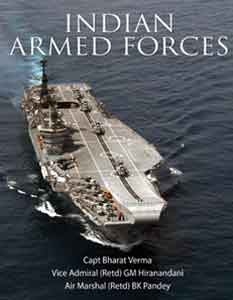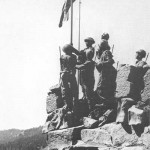Strategic & Tactical Airlift Capability
The emerging regional power status requires the nation to have the capability to intervene in the region to preserve peace and stability. Action of this nature was witnessed in the late eighties on a small scale in Sri Lanka and the Maldives. Operations of this nature may have to be conducted on a larger scale in the future. The existing strategic airlift capability structured around the IL 76 fleet acquired in the mid-eighties is grossly inadequate for the perceived strategic role for reasons such as fleet size, poor state of serviceability and low residual calendar life of the fleet. The IAF must have strategic airlift capability to move at least a Brigade Group along with their combat equipment in a single wave over extended range to cover the area of interest without the need for intermediate refuelling stopover.
| Editor’s Pick |
The IAF needs to reassess the shape and size of strategic airlift fleet and plan the induction of the replacement aircraft within ten years from now. Updated versions of the American C 17 and the C 130 or the European A400 could be some of the possible options. Contingency plans must include employment of the huge civil air fleet as well. In view of their larger reaction time however, the civil air fleet will be useful not for initial response but for induction of larger formations and for supporting operations that follow.
The IAF needs to reassess the shape and size of strategic airlift fleet and plan the induction of the replacement aircraft within ten years from now.
In addition to the strategic airlift capability, the nation will also need a sizeable tactical airlift capability which must combine medium tactical transport aircraft and heavy lift helicopters. Plans by HAL to develop a medium tactical transport aircraft in collaboration with renowned international partners, is yet in a nascent stage and need to be pursued with singular focus as the AN 32 fleet will have to be phased out in a decade or so. Tactical airlift capability will be required for inserting a battalion group directly into battle in airborne assault operations or for air mobility of ground forces for inter-theatre operational redeployment in response to rapid changes in the situation, for a variety of internal security tasks as nearly 30 per cent of the districts in this country are naxalite infested in addition to insurgency in J & K and the north eastern regions and the management of disaster.
 The IAF needs to build up heliborne forces trained for operating both by day and night obtaining real time intelligence information from UAVs for vertical envelopment in counter insurgency operations in all types of terrain. Action is in hand to acquire 80 helicopters of the MI 17 class which will meet with current requirements. For the 2020s, a fresh assessment would be necessary.
The IAF needs to build up heliborne forces trained for operating both by day and night obtaining real time intelligence information from UAVs for vertical envelopment in counter insurgency operations in all types of terrain. Action is in hand to acquire 80 helicopters of the MI 17 class which will meet with current requirements. For the 2020s, a fresh assessment would be necessary.
Battlefield Strike
The constantly rising and prohibitive cost of fixed wing combat aircraft presently to the tune of Rs 200 crore or more apiece and the increasing lethality of the battlefield, it is becoming more and more difficult to employ fixed wing combat aircraft against low value targets in the battlefield. The responsibility to engage targets in the battlefield could shift to Battlefield Support Missiles which for enhanced accuracy, will be programmed with target information obtained in real time from UAV operating over or in the vicinity of the battle area.
The scientific establishments in India have made impressive strides in the field of space technology. It would be the responsibility of these organizations to provide the IAF with new capabilities in its drive to be an Aerospace Power.
Low value targets could be engaged more effectively, efficiently and economically by Unmanned Combat Aerial Vehicles (UCAV). Helicopters too may be employed for battlefield support in conjunction with real time intelligence information from UAVs. But in the battlefield of the future, helicopters would be highly vulnerable.
In-flight Refuelling
A force multiplier acquired in the recent past is the fleet of six IL 78 In-flight Refuelling Aircraft. Its rapid integration in to the IAF has been a remarkable feat by any standard. In-flight refuelling capability helps enhance the radius of action of combat aircraft and given the size of the combat fleet and the intensity of operations, the fleet of force multipliers acquired recently, is clearly inadequate. In-flight refuelling can also enhance the range and radius of action of medium tactical transport aircraft as well and help augment airlift capability. Thus apart from providing support to combat elements, this capability will have a crucial role in the security of the EEZ and the island territories as also in the discharge of responsibilities related to regional power status.




